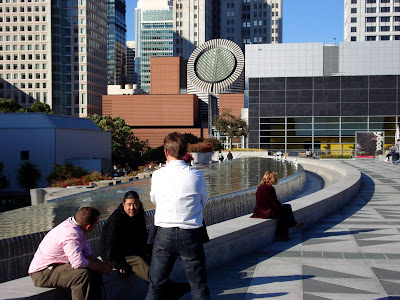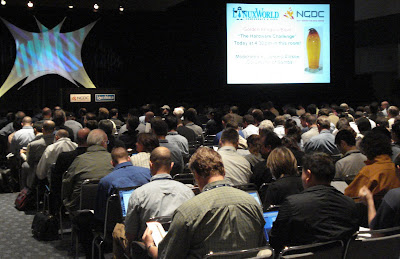 1999 was the year I went to a Linux World & Expo event (blog notes in portuguese) for the first time, in Raleigh, NC. The small capital was chosen probably because of the strong Red Hat presence in that region.
1999 was the year I went to a Linux World & Expo event (blog notes in portuguese) for the first time, in Raleigh, NC. The small capital was chosen probably because of the strong Red Hat presence in that region.
A lot of things have changed since then. Red Hat doesn’t have a booth this year, but got a lift in partners as HP. Novell/SUSE has the biggest presence — all green enforcing the SUSE brand more than Novell — in a giant booth full of partners.
 This year event has merged with Next Generation Data Centers (NGDC) conference associating Linux much more to an infrastructure tool than to a cybercultural revolution.
This year event has merged with Next Generation Data Centers (NGDC) conference associating Linux much more to an infrastructure tool than to a cybercultural revolution.
This is another thing that changed. All that glamour LWE event had in the past, as a generic real meeting point for Open Source activists that knew each other only through mailing lists, has been moved to technosocial events as FISL in Brazil.
If you want to discuss Open Source politics, social impact, cultural shift, Creative Commons, law, etc with geeks, go to FISL. If you just want to see practical IT solutions mostly delivered by marketing and sales folks, go to LWE.
The keynote speakers were Amazon.com and eBay and their speech was about Grid, Virtualization, NGDC and web services. We know these companies use Linux sometimes, but the presentations’ focus was way out of this.
Most interesting things I’ve seen today:
- GlusterFS. A highly configurable user-space distributed filesystem that achieves extremely high throughput, ideal for HPC clusters. Oil companies are starting to use it because a centralized NAS as NetApp can’t serve their thousands of HPC compute nodes efficiently. I enjoyed seeing some AFS characteristics as single mount point, and distributed high performance as GPFS together with some parts of FUSE. Oh, and it is Open Source. Z Research, the company behind GlusterFS, makes money selling services and has Anandu Babu, a former GNU Hurd developer, as their CTO.
- Cluster IP. Mentioned by IBMer Alan Robertson, head of the Linux-HA project, in a conversation we had in the IBM party later. It is a technique to balance a workload without LVS or any kind of external entity. Each server on the cluster have same IP and MAC address and they agree about an affinity with each client. Pretty cool.
Other things:
- Motorola released today their Eclipse-based IDE for mobile Java application development, also supporting their Linux-based family of cellphones. Opposed to Nokia’s IDE named Carbide (also based on Eclipse, for Java, C and C++), Moto’s IDE is free for download.
- First time I see a Trolltech booth, presenting several devices running QTopia. I like Trolltech. Their QT library is wonderful and very well designed. Remember: connect(signal,slot).
- Open Source community celebrity Ted Tso was showing the Real Time patches for the Linux Kernel together with a modified IBM JVM for [mostly used by militar] Real Time applications.
By the way, all computers in the registration area and used by event staff, plus most laptops used in booths and for presentations were running other operating systems. Linux on the desktop is getting more inexpressive everyday.
Folks as Jack Aboutboul, from Fedora, recognized me because of some Planets I participate. Thanks blogosphere.

